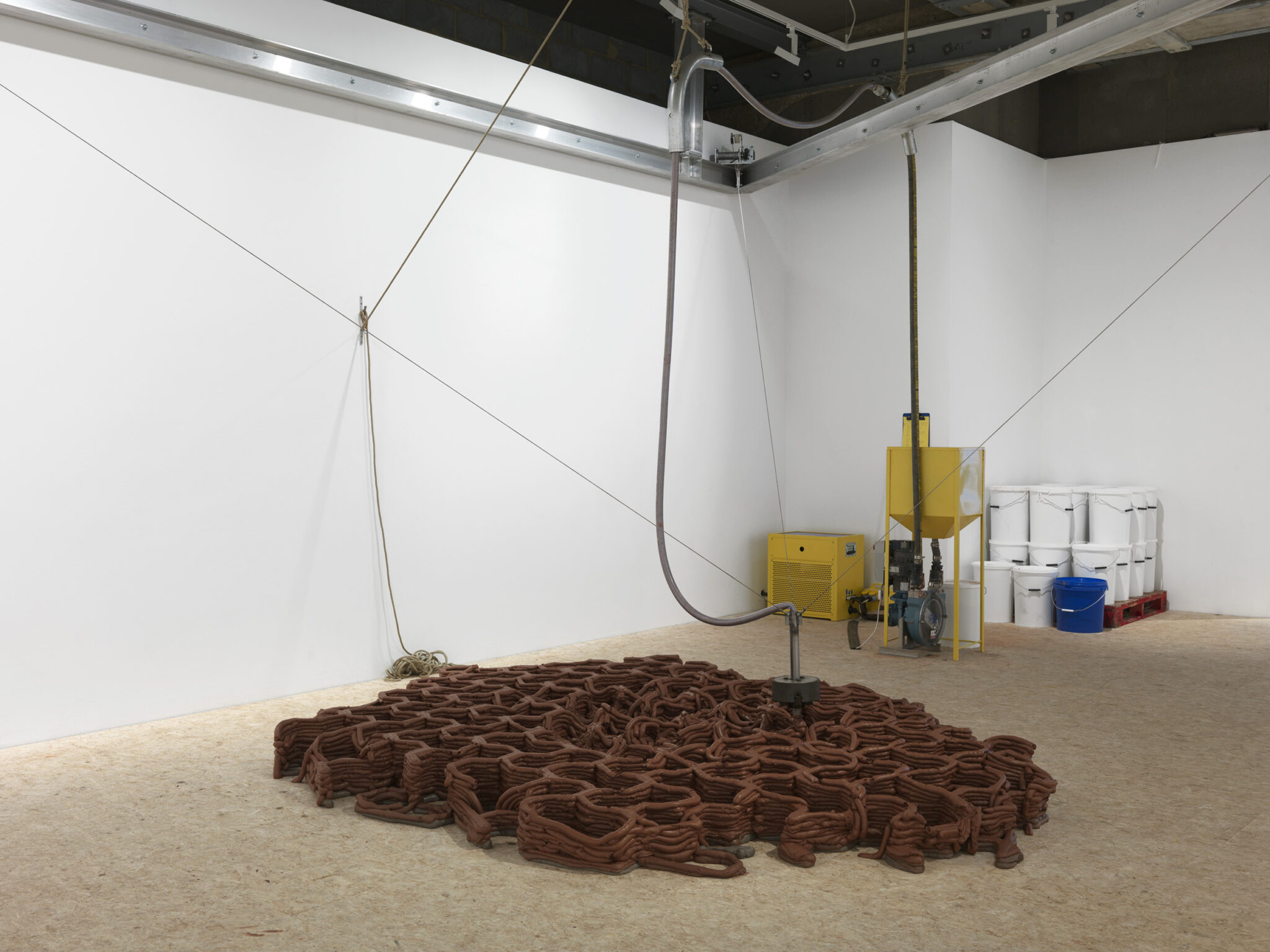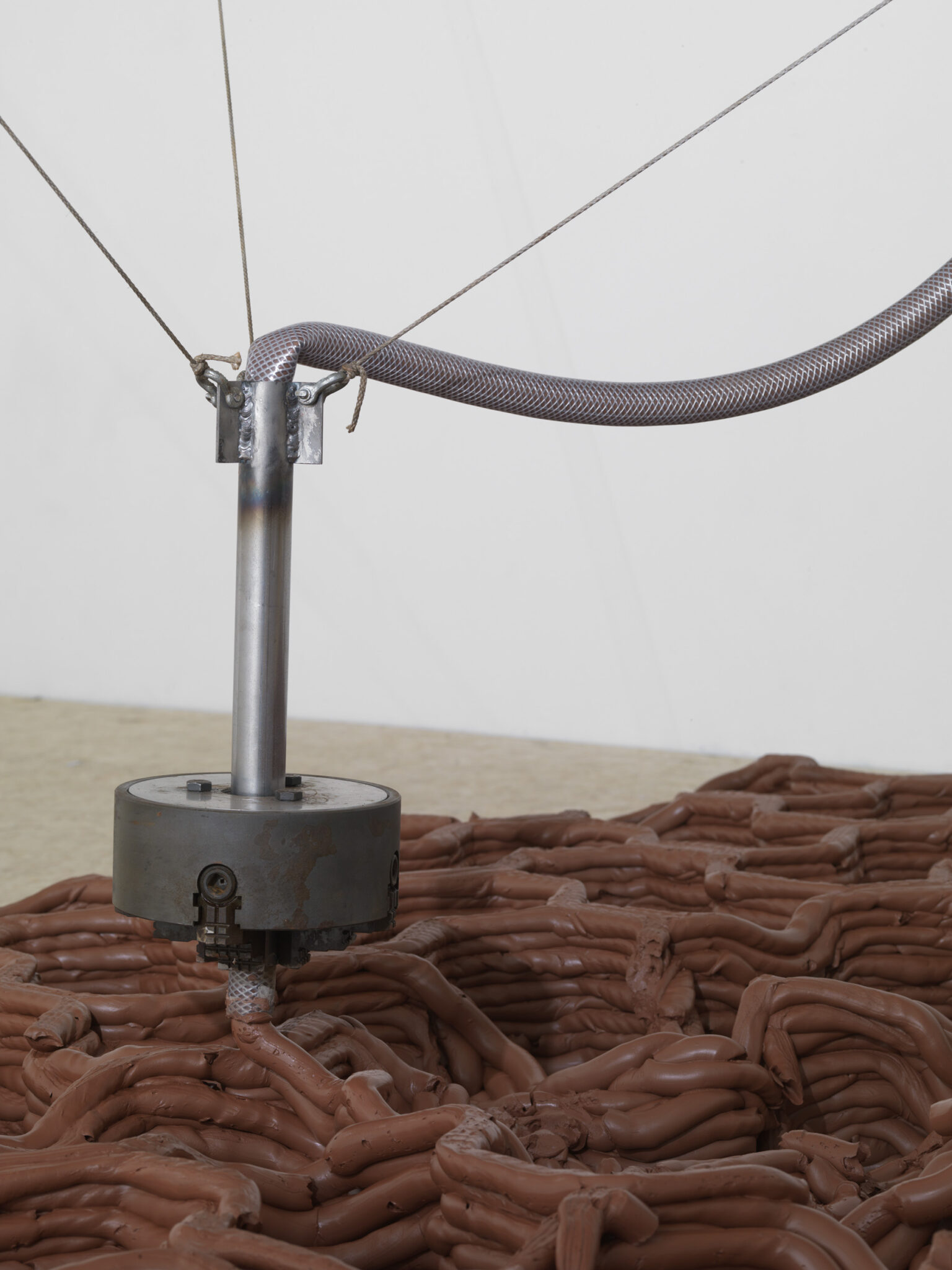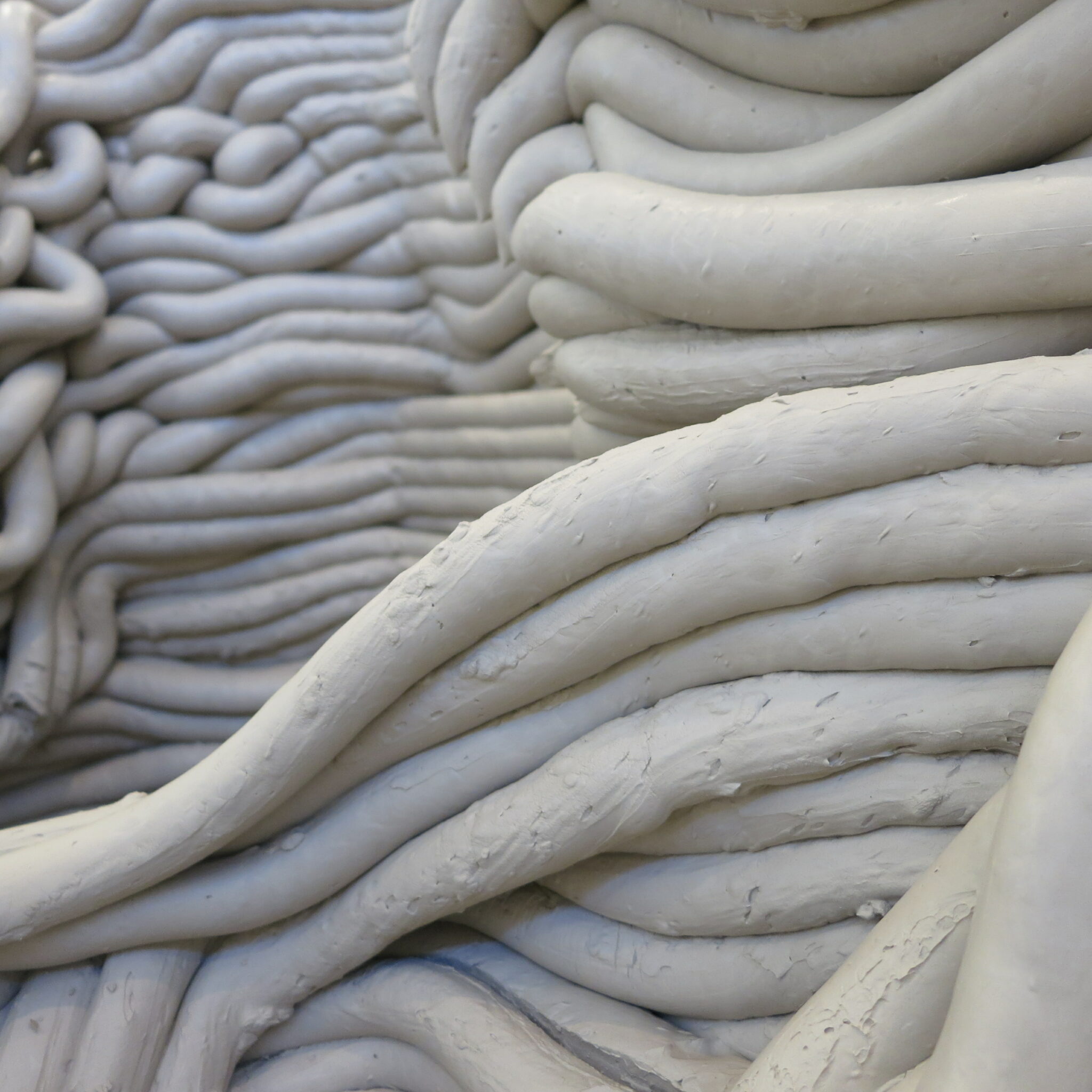
Of course, the ill-suited nature of slip clay through the very precise 3D printer creates unpredictable results. This work, which highlights the tension between the fallibility of technology and the freedom of clay, also prompts consideration of the relationship between maker and material, the artist never absolutely in command of their materials, even when the results may appear more controlled than they do here. Gallaccio’s work in California also feeds into this large installation–employing aspects of the technological developments that spread out from Silicone Valley and the vast scale of the surrounding nature.
Can you tell me a bit about your current show at Thomas Dane?
For the show at Thomas Dane, I am building a mountain. It’s the evolution of my last show at the gallery and reflects an on-going fascination with dirt as both material and subject. We have built a large-scale plotter (a 3D printer), which extrudes clay and will draw a version of the Devil’s Tower in the space. There are also some drawings, which have been made using dirt collected from driving through the American South West and mineral pigments.
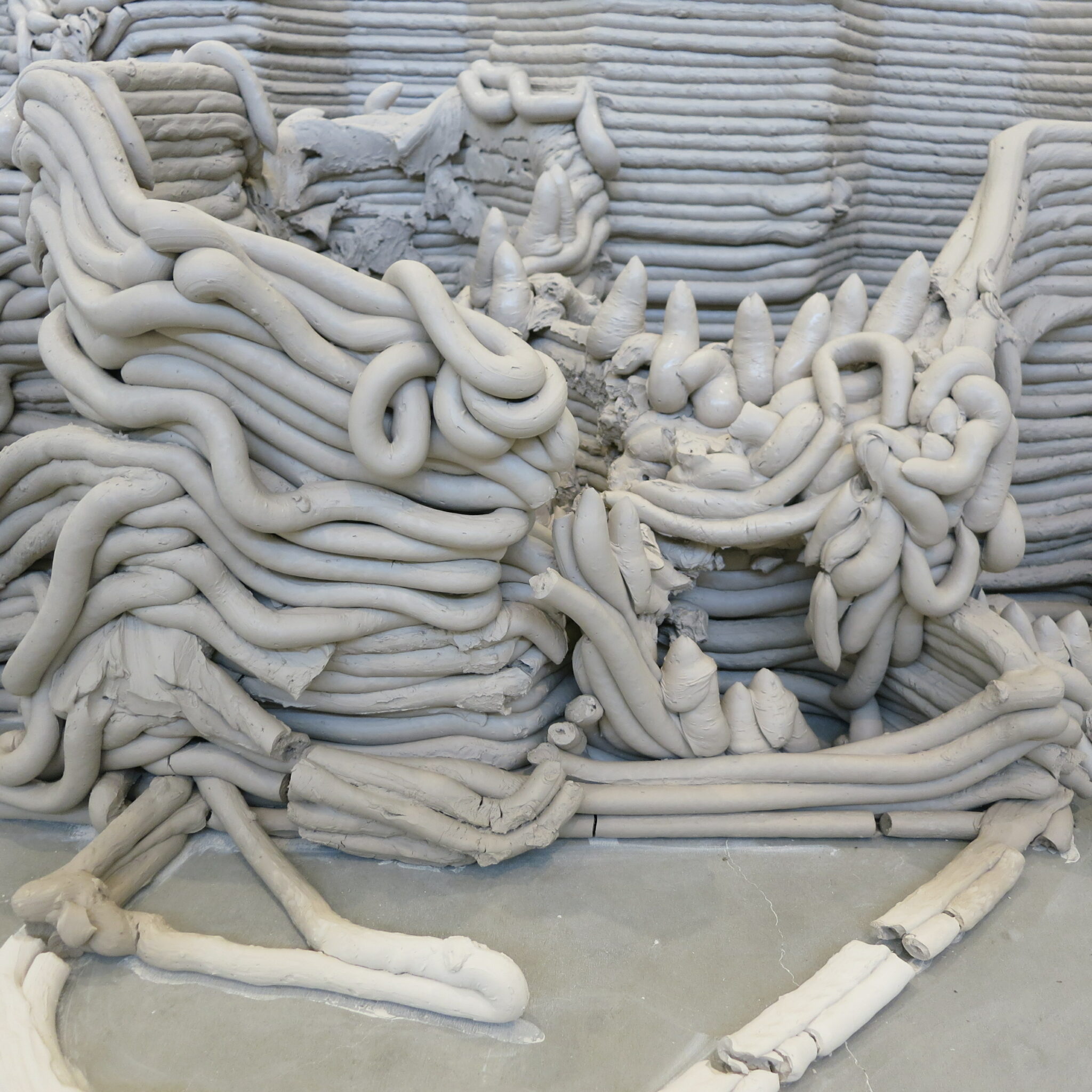
Anya Gallaccio, Beautiful Minds, 2015
Why did you look for a specific, known form for the machine to attempt to print, and why Wyoming’s Devil’s Tower in particular?
Devil’s Tower is a natural wonder, a sacred site and is the first US National Monument. It’s an iconic form. The “mountain” will most likely not be recognisable as Devil’s Tower, but it seemed important to start with a form that was recognisable to have some measure of the degree of slippage or “interpretation” of the form and material due to the process.
The idea of control comes in at different points of Beautiful Minds–lack of control from artist to final product and lack of control from machine to material. To what extent have you controlled this work, and do you feel control is often lacking, even with a work that might seem more designed and managed directly by the hand of the artist?
I keep returning to the 1977 Spielberg movie, Close Encounters of the Third Kind. Richard Dreyfuss’ character is compelled to make a form that turns out to be the mountain; this obsession leads him on a journey. There seemed a lot of parallels between his character and the risk and uncertainty of being an artist. Maybe this is an affirmation of not knowing? Working without an expected outcome. Whilst it is not as apparent in some examples, those ideas of control are pretty much always in play. Control becomes even more convoluted in this project. We can capture a crazy amount of information with digital tools, but this still needs to be translated, interpreted–so as with everything something is lost, it’s a subjective process. The system and logic of the programme and code are at odds with the physical properties of the clay. The slippage between the logic of the computer and the limits of the material, this makes the work. I am anticipating the outcome being gestural and expressive, despite the systematic path of the code.
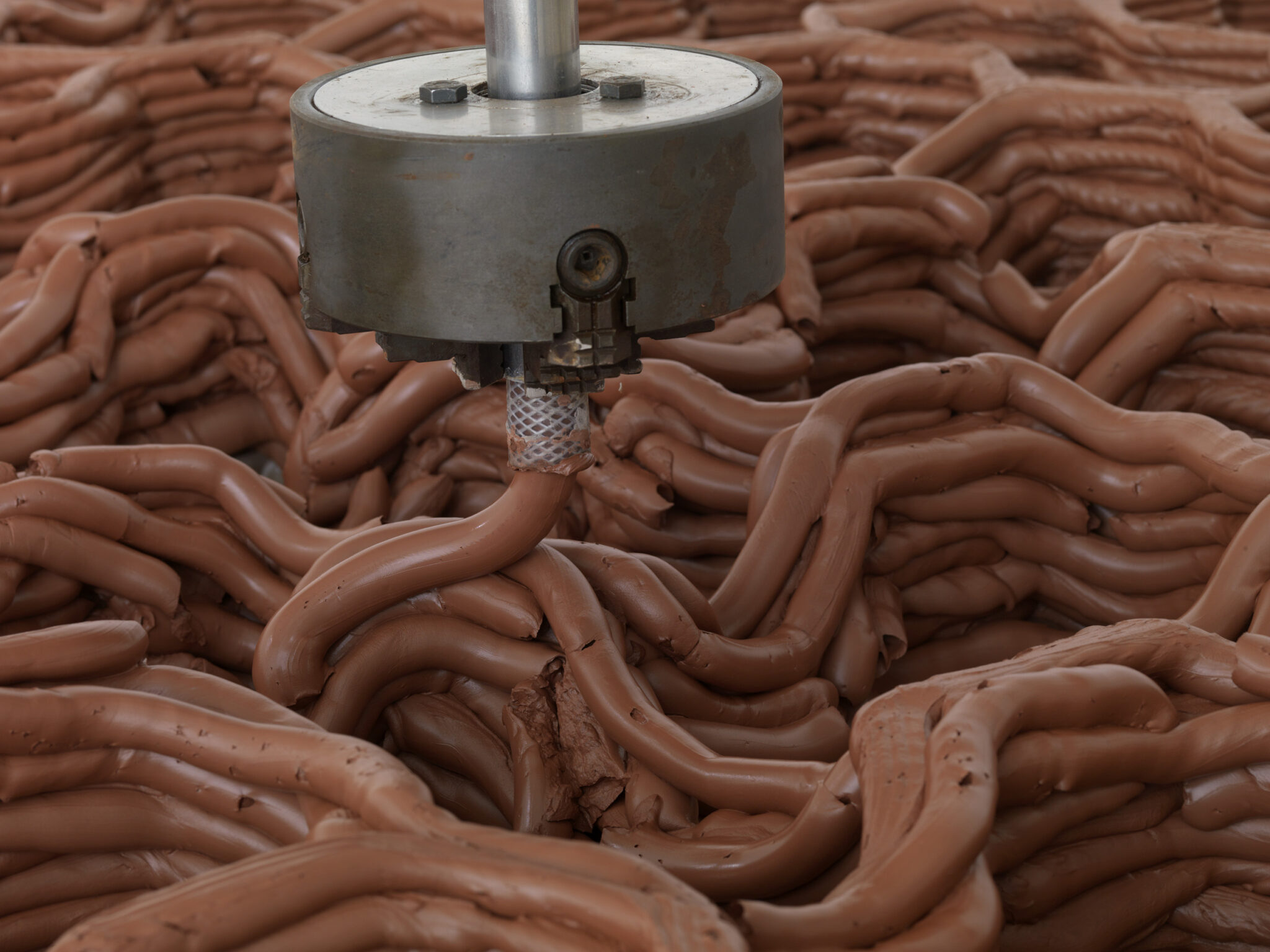
This feels like an exciting coming together of traditional materials with 21st Century technology. Are you interested in blurring or obscuring those ideas of “old” and “new”, or is this simply a by-product of the work?
I was excited to see how the process still dominates the outcome. In an earlier iteration of this work, some people complained that “it was going wrong”. I guess it depends on your perspective, it is funny and unexpected.
Do you feel the influence of California on your work and practice?
I have access to the endless vastness of landscape and sky, it’s a cliché, but I wanted to see if I could address this expanded scale.
‘Anya Gallaccio: Beautiful Minds’ runs until 25 March at Thomas Dane, London. All images courtesy the artist and Thomas Dane Gallery, London.
